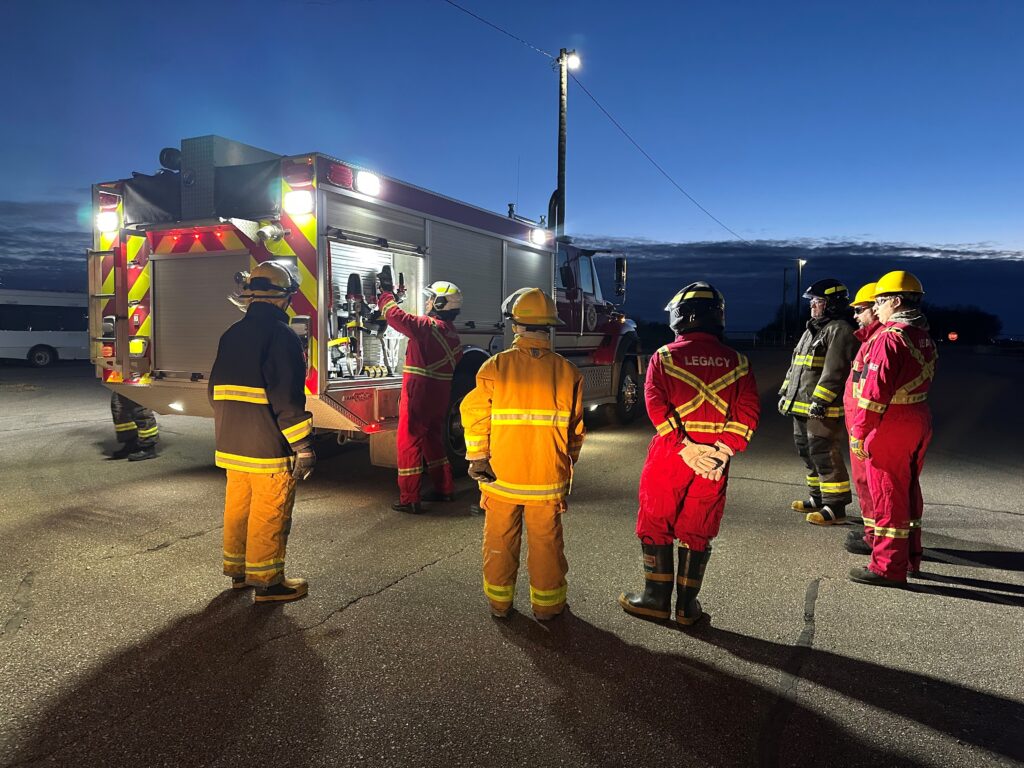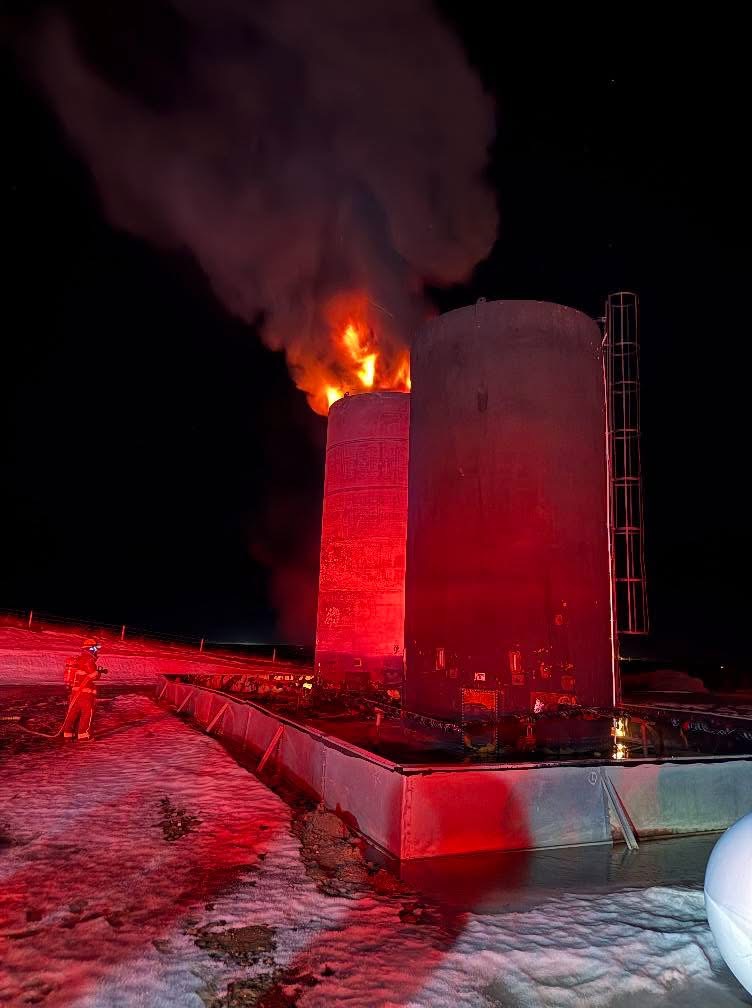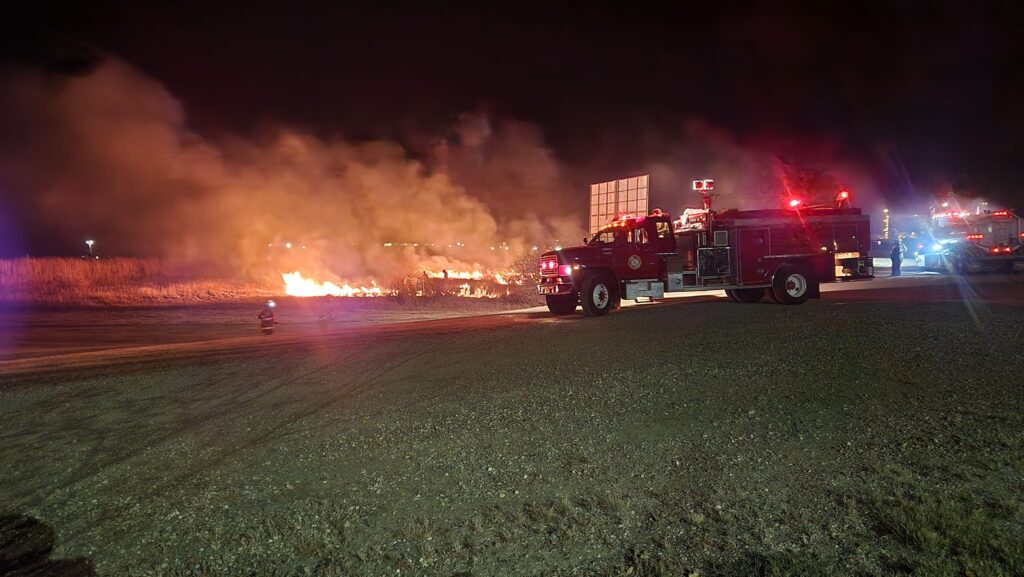Volunteer fire departments across Canada are struggling to recruit and keep firefighters, as busy lives and tough economic times make it hard to find and retain volunteers.
Despite this, departments are finding creative ways to address the issue, but challenges remain.
Fire departments across Canada, including those in Alberta and Saskatchewan, rely heavily on volunteers. Yet recruitment and retention are ongoing problems. According to Dean Peters, Regional Chief of Legacy Regional Protective Services, “When you add volunteers and firefighting, you complicate it several times over.”

Read more: Extrication practise teaches new trainees
The issue is felt across the county, including on both sides of our border.
Louis Cherpin, President of the Saskatchewan Volunteer Firefighters Association, agrees with the assessment.
“Recruitment and retention is an issue in all areas,” said Cherpin.
He noted many volunteer firefighters quit within their first five years.
Peters emphasized the issue is not just recruitment but also retention. Many firefighters leave due to changes in life circumstances or job demands.
“Firefighters have a skill set that needs to be maintained, so training gets repetitive,” he said. “There is hard work—did we mention that?”
A 2021 Fire Service Review from Sturgeon County, Alta., showed 63 per cent of fire careers last just one-five years, and only a small percentage stay beyond 10 years.
The Canadian Association of Fire Chiefs (CAFC) has also raised concerns.
“Canada’s volunteer firefighters are a national resource. Our challenge now is creating conditions for all firefighters to come, stay and succeed in the fire sector,” said the CAFC in a statement.
According to Peters, the stigma surrounding mental health in first responders hampers recruitment. He added demanding time commitments also make recruitment difficult.
“There is a front-heavy training program to bring a recruit to the level of competence,” he said. “Volunteer firefighters seldom get paid to train. Many are paid-on-call. It is not a money-making venture.”

Read more: Oil tank fire put out near Paradise Valley
Some solutions:
To combat these issues, some departments are finding success with new strategies.
County of Vermilion River increased its volunteer numbers by about 40 firefighters over the last four years. Protective Services Chief, Kirk Hughes, said “We have increased our pay for calls, up to almost $32 an hour, and added a pay scheme for training nights.”
Hughes added partnerships with local colleges help attract volunteers. Students gain real-life experience while bolstering the department’s numbers.
“When they apply for full-time positions, they’ve got a well-rounded resume,” he said.
In Saskatchewan, Cherpin mentioned some rural fire departments are working with farmers to help with wildfires. Farmers bring water trucks and heavy equipment to fire scenes with safety being a top priority.
The CAFC is pushing for a national fire administration to support firefighter health, safety, and training. The federal government has taken some steps, including doubling the volunteer firefighter tax credit to $6,000 in 2024. However, fire associations continue to lobby for more mental health support and protection.
Departments are also turning to technology to improve efficiency. Cherpin’s department uses drones to search for and rescue. Additionally, the can also monitor large fires.
“For visual, we put it up to take pictures and maybe if there’s hot spots,” he said.

Read more: SVFFA hosting training in Britannia
Some optimism
Despite the difficulties, fire chiefs remain optimistic. Hughes praised the commitment of volunteers who join to help their communities.
“Most volunteers join to help their communities; some join for community involvement, while others are looking to make it a career,” he said.
Peters said he celebrates volunteers who move on to full-time positions, despite the loss to his department.
“I congratulate the ones that get positions with full-time departments, and I share their pride in that accomplishment,” he said.
As fire departments across Canada search for solutions, collaboration, creativity, and community involvement remain crucial. While the challenges are significant, leaders like Cherpin, Hughes, and Peters believe progress is possible with continued effort and support from all levels of government.
Reach out to local volunteer fire departments through social media sites and respective websites if you want to join.
Read more: Donation helps rural fire department















